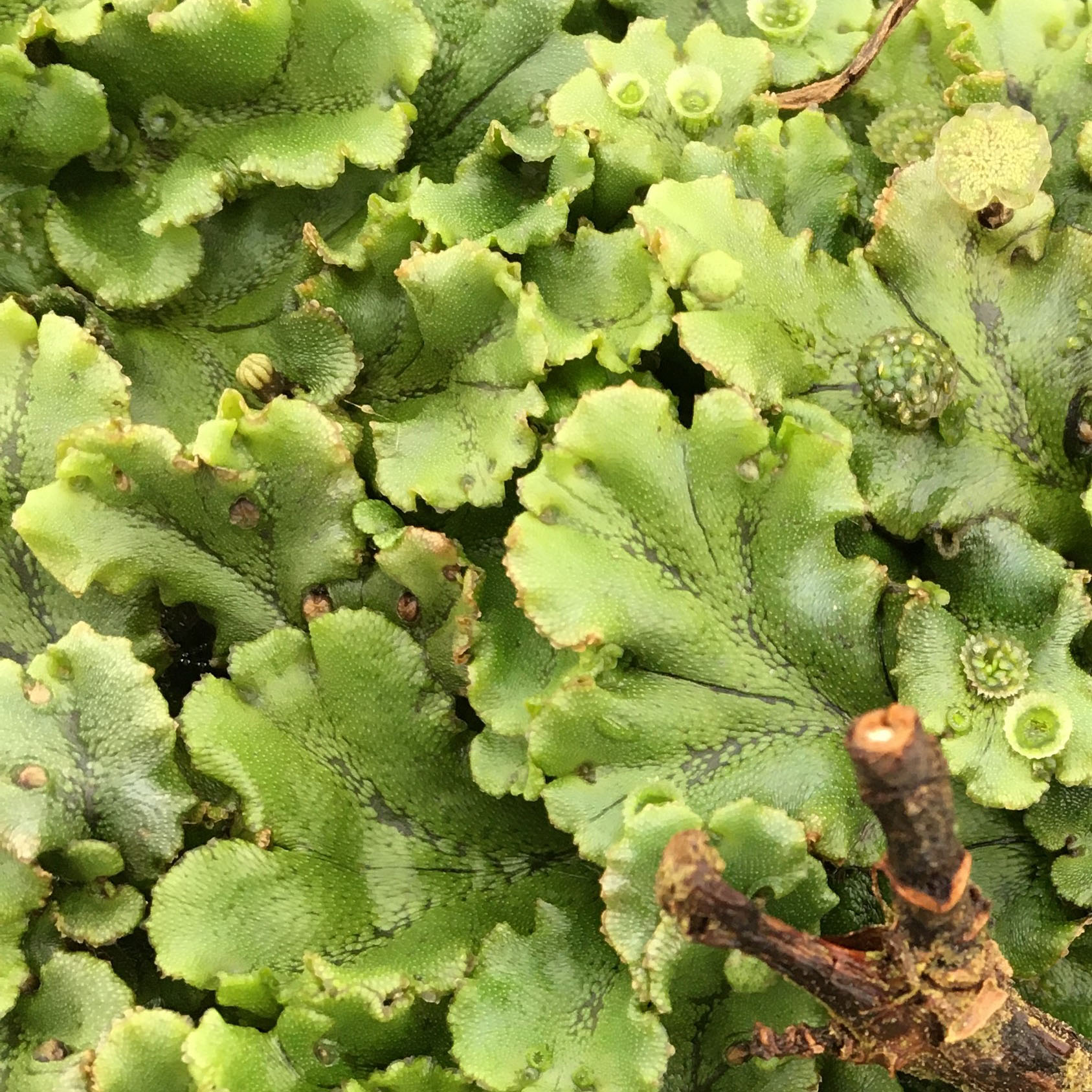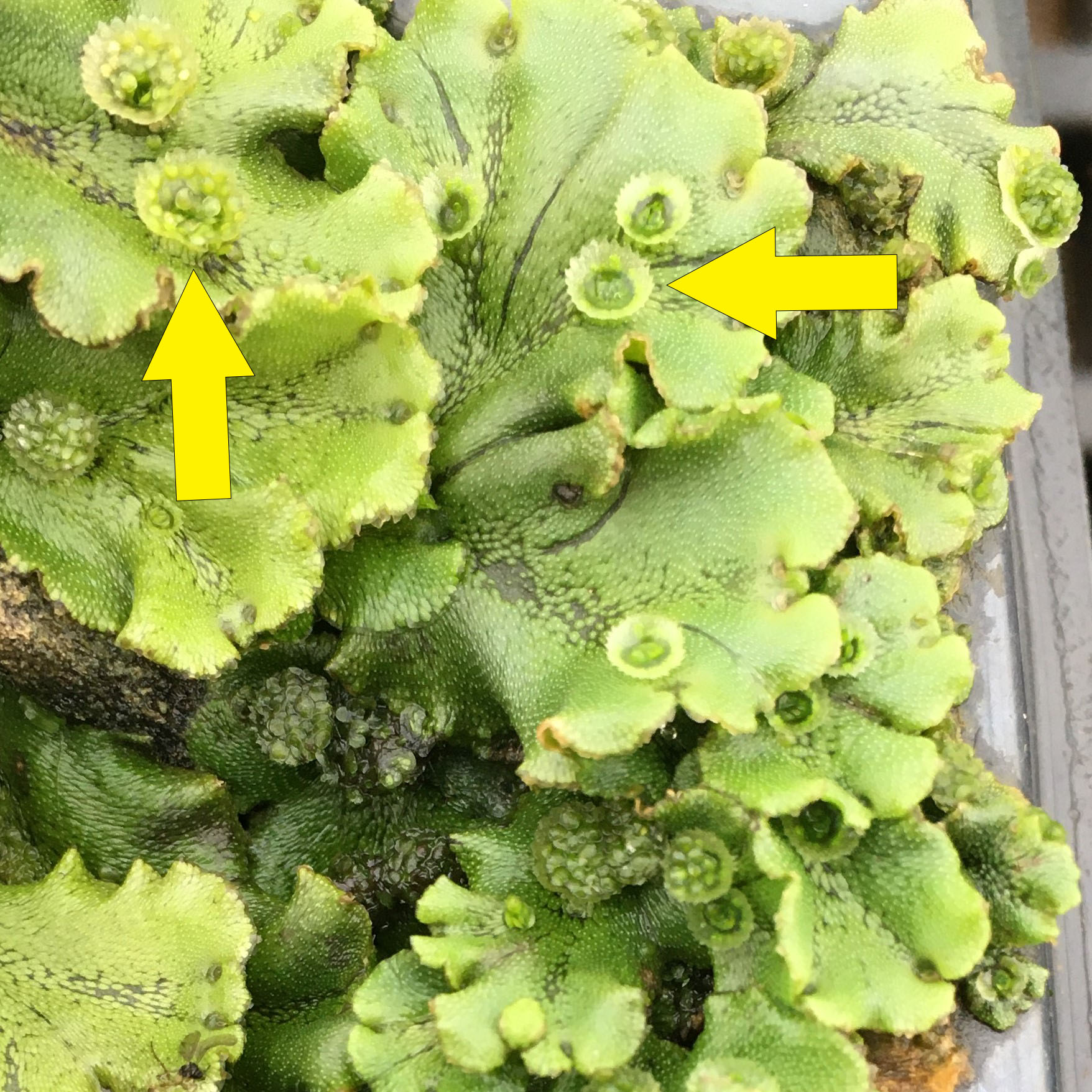How to identify and manage liverwort in nurseries and greenhouses
New fact sheet now available on identifying and controlling liverwort (Marchantia polymorpha) in nurseries and greenhouse container production.

Liverwort is one of the major weeds in Michigan’s greenhouses and production nurseries (Photo 1). It is primarily a problem in herbaceous perennials, woody ornamentals or crops with long production cycles with a dormant or vernalization period where crops remain damp for long periods of time. There are thousands of liverwort species with Marchantia polymorpha being the most common one prevailing in greenhouses and nurseries, according to Marble et al., 2017.
Liverwort, including Marchantia polymorpha, prefer cool temperatures, low ultraviolet (UV) light radiation, high fertility and moist or damp substrate. It reproduces rapidly in the presence of overhead irrigation, poorly drained or moist areas. The optimum temperature for vegetative growth is 64 to 72 degrees Fahrenheit. These environmental conditions are common inside greenhouses and nurseries, and the organism thrives and spreads rapidly once established in containers.

Liverworts form dense, prostrate mats covering the soil or container media surface. In container production, liverwort becomes highly competitive with the ornamental crop for water, nutrients and space. The liverwort mat can prevent the irrigation water and fertiligation from reaching the root zone of the ornamental crop and can repel water when dry. As a result, the overall quality and market value of the ornamental crop decreases.
Marchantia polymorpha is a non-vascular plant and has a thallus structure (Photo 2). It can reproduce through both asexual as well as sexual reproductive cycles. In gametophytic life cycle, the liverwort propagates asexually by producing gemmae within the gemma cups (Photo 3). Each gemma cup can produce numerous gemmae (asexual plant buds). Gemmae are released to the immediate area when splashed by water from rain or irrigation. After leaving the mother plant, each gemma can form one to two clonal plants after contact with moist soil or substrate.

At temperatures 50 to 59 F, Marchantia polymorpha develops sexual structures. Stalked, umbrella-like male and female reproductive structures are borne on separate thalli. Sperm cells produced by the antheridia travel via water (rainwater or irrigation splashing on the upper surface of the antheridiophore) to fertilize the eggs on the undersides of the archegoniophore, according to Marble et al., 2017. After fertilization, spore development takes place. Once they mature, they get dispersed by wind or water and germinate on moist substrate under suitable growing conditions.
Managing liverwort in container production can be challenging. For a successful liverwort control, it may require a combination of herbicide applications along with proper cultural and sanitation practices. There are very few herbicides labeled for greenhouses, as there can be phytotoxic effects on the ornamentals. A Michigan State University Extension fact sheet, “Identifying and managing liverwort in Michigan nurseries and greenhouses,” has been developed where identification and management strategies of liverwort for container production is discussed. In this fact sheet, readers can find lists of pre and postemergence herbicides that have shown some degree of liverwort control and are safe to apply to ornamental plants in nurseries or greenhouses. This fact sheet can be a useful resource for nursery and greenhouse growers to choose the right strategy for controlling liverwort according their production system.
View Fact Sheet on Identifying and Managing Liverwort in Michigan Nurseries and Greenhouses



 Print
Print Email
Email

